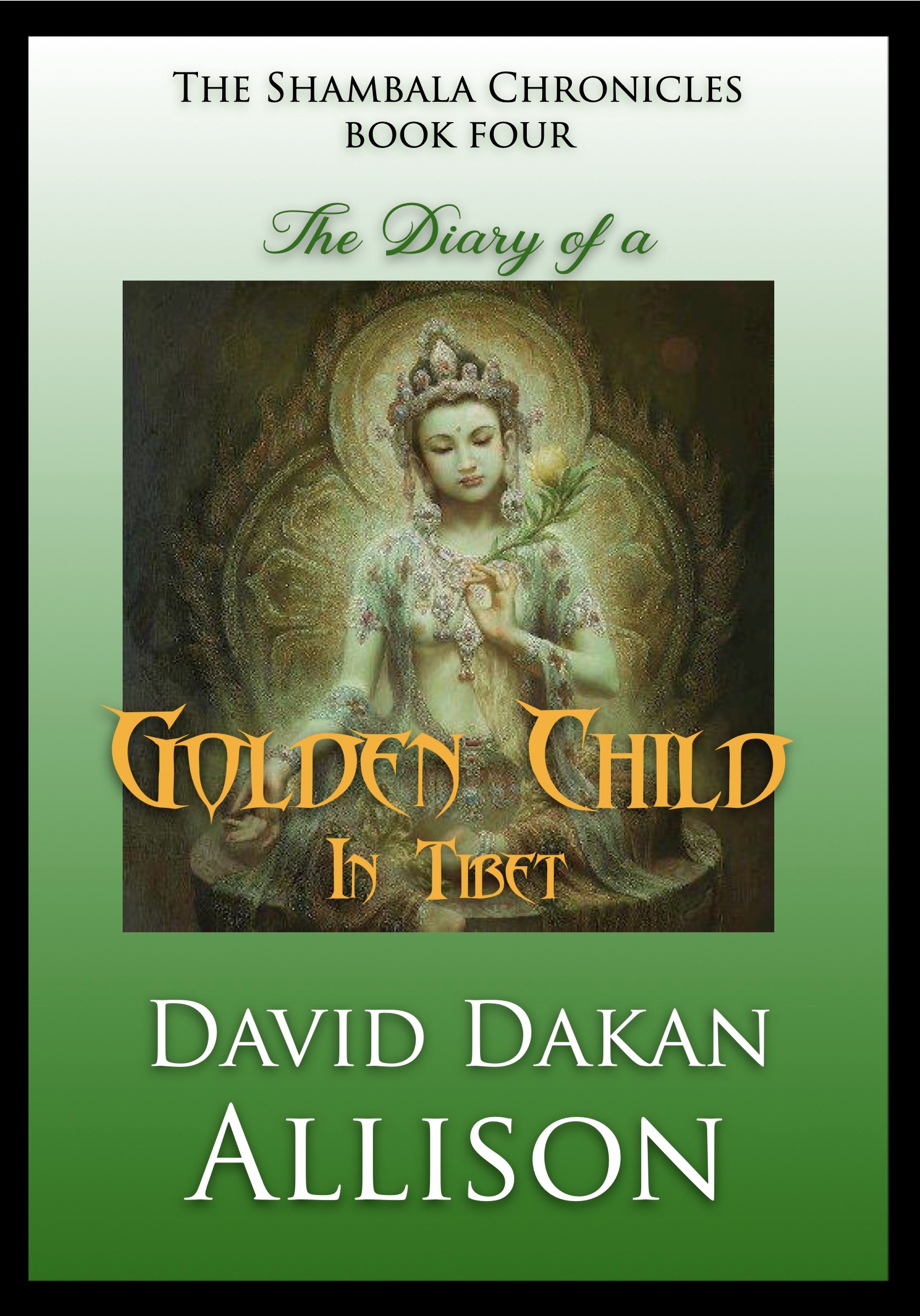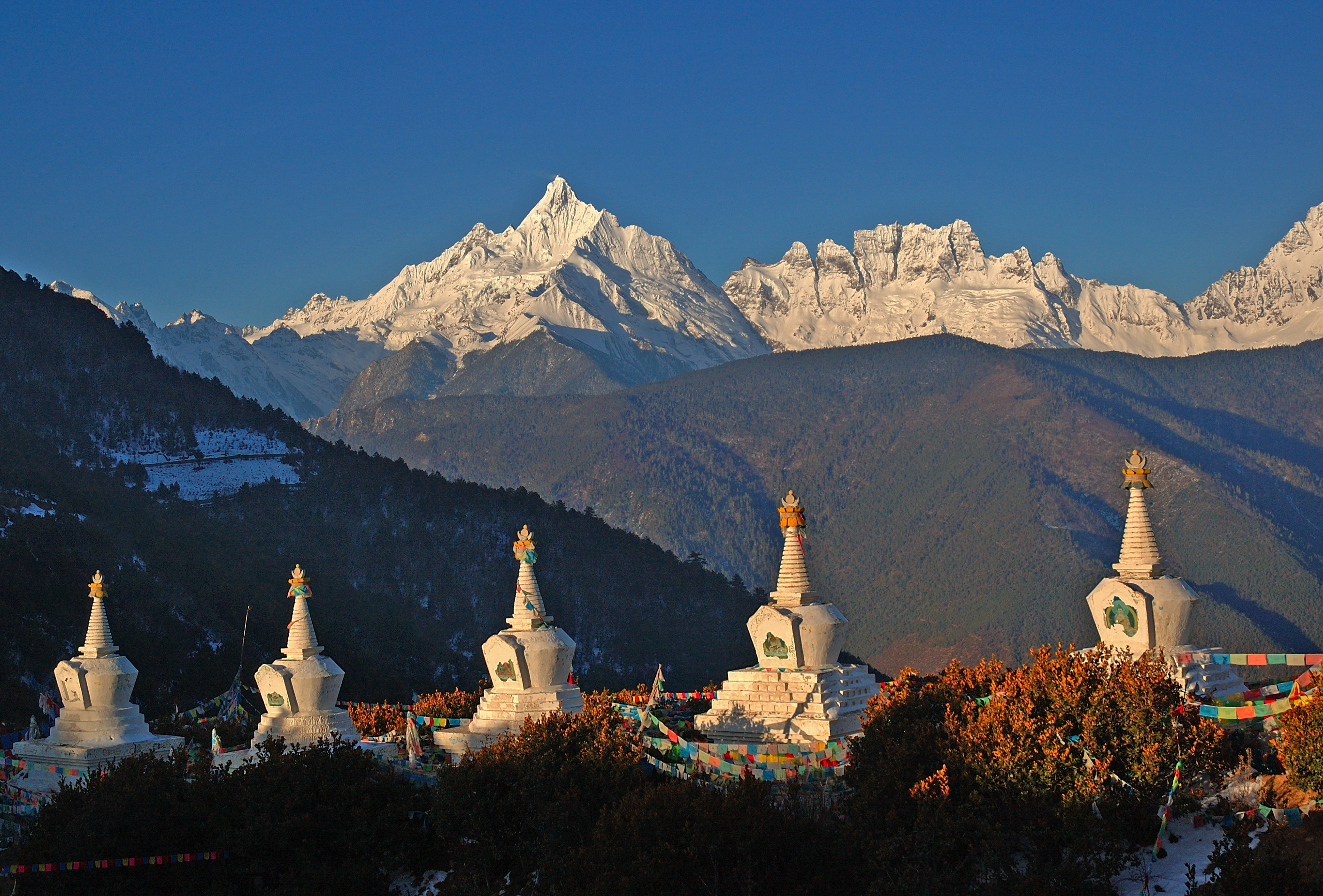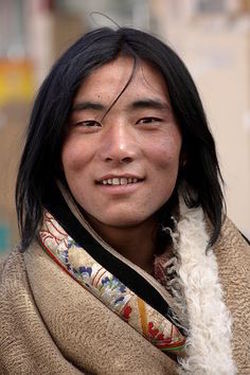
The Diary of a Golden Child in Tibet
Ready to be Published
This book is not a mystery novel. A main character in the Shambala Mystery series is an 80-year-old billionaire named Robert St. Clair. In Book Two – The Fourth Dimension – he told a remarkable story that nobody believed. At age five in 1937, while with his American parents visiting their guru in Lhasa, Tibet, Robert was chosen to be the linages’ next guru. The parent left and he became a Golden Child, living like a prince in Shambala for the next thirty years. During his last years there he wrote a book called Man Gods One Heart. The diary stories in this book were taken from that book.

STORY
Robert St. Clair is an enigma. Book One – The Third Dimension – tells the story of Robert as the billionaire owner of Shambala Natural Foods. He moves to a dimension home, Happy Acres, and then disappears with three elderly friends, reportedly on his was back to Shambala. Book Two – The Fourth Dimension – is about what happened before entering a portal in the Yucatan. In Book Three – The Fifth Dimension – he and his friends and the detectives following them, all go through rites of passage before they can enter into the 5th dimension – Shambala. This book tells about his thirty years training to be a holy man in Tibet, before returning to his parents home in Portland Oregon, where he became a grocer.
Herein I’ve compile parts of this book, mostly his diary entries and parables taught by his teacher Tenzin, in a readable presentation.
Robert’s return to Shambala begins in the jungles of the Yucatan. There are portals to Paradise all over the world, The portal in the jungles of the Yucatan, Mexico was much closer to Portland, Oregon. so first Robert and his friends must first find that portal, in order to arrive in Tibet, and then find a second portal to Shambala. “All paths lead to paradise.”

PROLOGUE
(Fiction with the author being “I” in this Prologue only )
What you’re about to read came from an out-of-print book titled Many Gods One Heart, which I had found high on a dusty shelf, in an old metaphysical bookstore in Long Beach, California, ten years ago. I’d heard a rumor about an elderly man named Robert St. Clair, an American billionaire in Portland, Oregon, who had rejected his early life as a Tibetan holy man. I had searched everywhere for this book, in order to finally verify this very far-fetched, novel-worthy, story. The name on the cover of Many Gods One Heart was Chogyal Da Rinpoche. My heart lifted when I had read the tiny print on the publishers page: Thank you Robert St. Clair, aka Chogyal Da Rinpoche, for the wisdom of your words. This is what lead me to Portland.
After a great deal of stealth investigation, me being a writer of detective novels, I found Robert’s Frank Lloyd Wright home outside of Portland. In what I later found to be an extremely rare and fortunate occurrence, he answered the door and invited me in for tea. After I laid his book on the table, he told me the story of his life as a young guru, studying all religions for thirty years in the mystical valley of Shambala, in the Himalayas.
This happened just prior to his stroke, which left the 80-year-old Robert in a coma for a month. After he recovered, he called and encouraged me to reformat and edit Many Gods One Heart, and republish it. Robert then moved into a gated Portland, Oregon dementia facility called Happy Acres, though I was sure his mind was still as sharp as a tack.
Many Gods One Heart told the remarkable story of an American couple, their parents, who had traveled to the Portola in Lhasa, Tibet in 1937, prior to World War II with their five-year-old son Robert. Once there, the not long for this world venerable master teacher proclaimed Robert to be a “Golden Child,” his future replacement in a long lineage of Rinpoche’s. They renamed him Chogyal Da Rinpoche and kindly asked his parents to leave Tibet.
The book substantiates that for the next thirty years, until Robert disappeared in 1967, he was taught by a very wise man named Chopa Tenzin, in this mystical valley of Shambala, which remains hidden to this day, somewhere in the Himalayan Mountains. This is what is hard tot believe to be true. Shambala is a supposed to be a myth.
After Many Gods One Heart was published in 1966, the Shambala lama’s decreed that the young Master was ready. Chogyal Da Rinpoche would be their American Guru. His teacher Tenzin scheduled a 1967 tour of the United States, during which the thirty-five year old guru “disappeared.”
The book was filled with religious philosophy; a woven compilation of Buddhist, Hindu and Christian teachings, with curious references to quantum mechanics. The theme was that there are “many Gods,” many spiritual teachings, but we are all connected with “one heart.” Unlike most Buddhist texts, the young guru used the word God throughout.
The 250-page book included passages from his personal diary, a few of his poems, and short parables about a Tibetan man named Shamar.
During my last conversation with Robert, he told my that after Many Hearts One God was published, he continued with his monastic lifestyle, even as an American businessman. After returning to Portland in 1967, he helped his parents in their grocery business, and eventually built it into the Shambala Natural Foods Empire it is today.
Robert told me that on the day he woke from his near-death coma, he made a plan to return to Shambala with Maggie, the woman he secretly loved, his best friend Howard, and Sopi, a dying woman who loved Howard. Since he owned Happy Acres, which he insisted was a secret, he took a room there to gain their trust.The Third Dimension tells the story of how after he healed Howard and Maggie of dementia, he talked his three friend into returning with him to his mystical paradise called Shambala.
In our final meeting, Robert gave me his blessings regarding this book, with some instructions: I was to go ahead and edit his book and give him the credit of being the original American Golden Child in Tibet.

This book contains several parables about a Tibetan man named Shamar, pictured here.
Chapter 8
DECEMBER 16, 1947
The very next day Teacher told me the first Shamar story. I was surprised when he gave me a hand printed copy. “Put this in your diary,” he said. It was titled:
A parable of Shamar by Chopa Tenzin
When Shamar was in his early twenties, he decided to leave his village and make his fortune in Lhasa, by far the biggest city in Tibet. As fate would have it, we met the day he arrived. I warned him that he would have some very difficult challenges here, that in such a big city as Lhasa, with no money or a job, that it was quite possible that he would find himself in some deep dark place with no way of getting out.
Shamar’s life had always been good and he didn’t believe that such a thing could ever happen to him. Nevertheless he asked for advice in case he stumbled into one of these dark places.
“We go into the darkness in order to find the light. Never stop searching for the light,” I told him.
Shamar lived on the street in Lhasa, doing small jobs in exchange for basic food and occasional lodging; his hope to find a good job making lots of money never materialized. His forever before secure life turned into insecurity, his days with plenty to eat and a clean bed to sleep on turned into going to bed hungry some nights, sleeping on cardboard in an street alcove, or in a bed infested with fleas and roaches. During this time he was often depressed, lost in a darkness that was nearly impossible to embrace. The light wasn’t welcomed in the back alley shadows of the city, or so it seemed.
Shamar wasn’t alone in his darkness; it was mirrored in the people around him; in those experiencing poverty, addictions, depression and hopelessness. He saw how easy it was for the better-off people to judge those without money and means. As a street person he felt dishonored, ignored or avoided. Nobody offered a helping hand.
Shamar was drowning in the sea of depression.
As a former monk, Shamar had been trained to exemplify the attributes of the Buddha, to adhere to the teachings in order to escape the suffering inherent in samsara; to be free of depression and other worldly emotions. Regardless, in Lhasa he was not exempt from the darkness of his existence. By the end of his first month he felt trapped in a hopeless situation. He continually wondered how the people who were better off could be judging him, when they had no idea who he really was? How could they pronounce him as inferior? How would they know? How could they possibly think Shamar was a detestable soul forever lost deep in darkness?
One day Shamar woke up and realized that people saw him that way because he was that way. He went to a cafe and ordered some tea and contemplated on why he had decided to be a bum, and not a Buddha, why he had chosen to be depressed and sink into a deep dark hole; one he decided he couldn’t possibly crawl out of.
Shamar realized that he was free to change. He didn’t have to stay in Lhasa, or remain in the hole he was in. He decided to speak to me, as if to get my permission to do what he knew was right.
He told me all about the darkness he had experienced in the big city, and how far he had traveled away from the light. I asked Shamar. “What has upset you the most?”
“The judgments of other people toward me,” the young man answered.
“Judgments received are feedback for judgments given,” I began. “Please understand that you Shamar don’t have enough information to judge another; that you would have to know everything about this and every other lifetime of that other person in order to even ignorantly understand why they say or do anything. To attempt to second-guess what another is thinking about you, is a waste of your energy. Love the life you live and allow others to do the same. Perhaps then people will see you as a beautiful light-filled loving master walking the streets as a living Buddha. Perhaps?
“Be the best you that you can possibly be, Shamar. And let others live their lives as they do. We really cannot be sure who is privileged, and who is destitute. Those with the most perfect seeming life could be in the biggest pain; those who seem to be suffering could have hearts filled with joy. Often the rich are poorer in spirit than the poor without money. The Masters watch each soul in equal measure,” I told him, “as they walk their awkward path to self liberation.”
I reminded Shamar that he was given a unique and precious life to live, and how that plays out is according to his person’s master plan. “Your destiny isn’t about where you are. It’s about what you’re inspired to do while you’re there. It is as simple as that.
This made sense, so Shamar decided to return to his village. He would get to know all the people. He would love everyone.
He was glad to be going home.
They say that when the student is ready, the teacher will arrive. Sometimes the teacher is the student. Upon returning to his village, Shamar was kind and loving to everyone he met. He told stories of his experiences in the big city, and what he had learned about life. It didn’t take long before quite a few people were beginning to see him as their teacher. Although he always denied being a teacher, he would help as he could and was always grateful to receive offerings of food and money.
Shamar became a happy man.